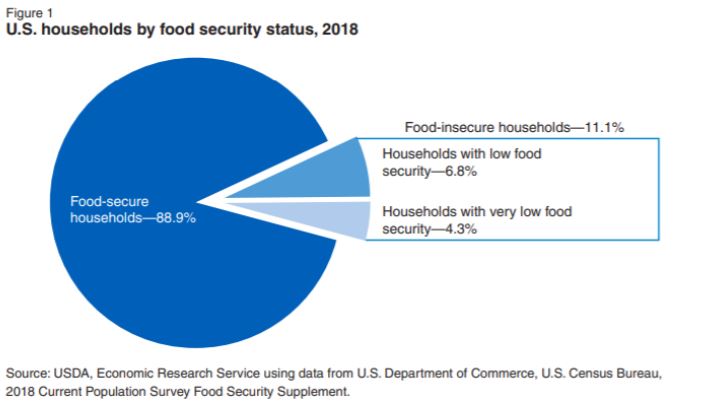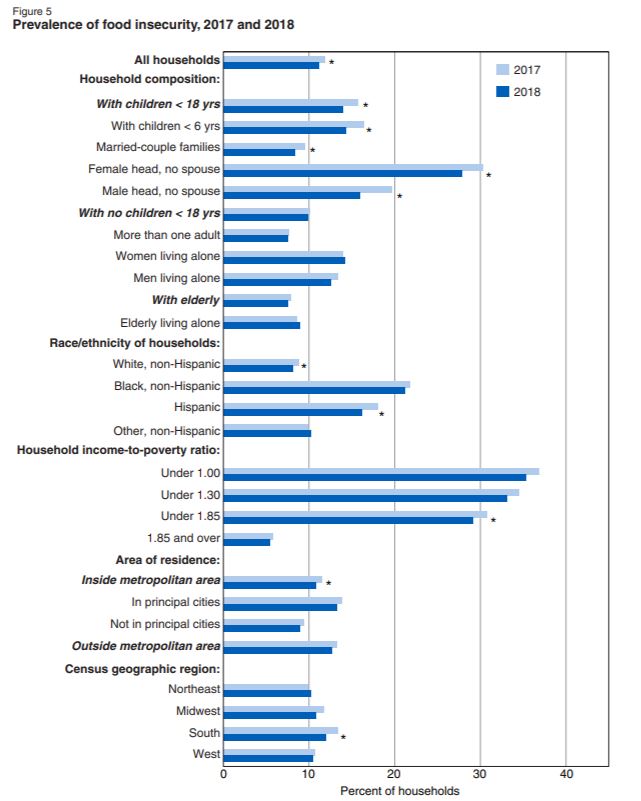
Food access is an important factor for health and well-being. In this post you will learn more about the high rate of food insecurity in the United States, and how this relates to public health.
You may have heard the term “food insecurity” before, but what does it really mean, and why does it matter?
Food insecurity is defined by the USDA at the household level as the lack of reliable access to sufficient nutritious food for a healthful life. In 2018, 11.1 percent of households were food insecure at some point during the year. Within this, there can be varying levels of access, including very low food security and low food security.

The barriers that exist for food access are complex and multidimensional. For example, lower-income is often only one factor that plays into food insecurity and does not always predict the likelihood of food insecurity. Often, social, geographic, and economic barriers have the biggest impact on the likelihood of food insecurity. The issue of food insecurity is important from both a public health standpoint and a human rights perspective. First of all, inequities in food access, especially in the United States, disproportionately affect vulnerable populations, including children, older adults, those in rural communities, and ethnic minorities.

This is especially troubling considering that food insecurity is associated with several chronic health conditions and poor health outcomes, including obesity, and lower physical and mental health. In a systematic review of dietary quality in a food insecure population, researchers found that food-insecure individuals consumed fewer vegetables, fruits, and dairy products. The adults in the study that were food insecure consumed lower levels of several vitamins: vitamin A, folate, calcium, magnesium, and zinc. Considering that dietary quality is an important part of health, this has implications for some of the health outcomes seen with food insecurity. Often , the cost of food is an important factor in the decision-making process for food-insecure households. With healthy food costing nearly double that of unhealthy foods, this may further point to the high rate of food insecurity in the United States. All of this information on food access can seem daunting – but there are some promising opportunities for eradicating it once and for all. Research on food insecurity encompasses a variety of disciplines from public health to geography to anthropology, and all of these are important in understanding what types of barriers and facilitators exist.
In the Chapel Hill area, non-governmental organizations such as the Food Bank of Central and Eastern North Carolina, Table, and Carolina Cupboard each provide a vital service for food insecurity individuals. Other opportunities to promote access to food include connecting individuals to relevant social programs, such as the supplemental nutrition assistance program (SNAP), women, infants, and children (WIC), and USDA-supported food pantries. Overall, given the high rate of individuals who suffer from food insecurity, it is vital that we bring light to this issue and its consequences.
Peer edited by Jamshaid Shahir